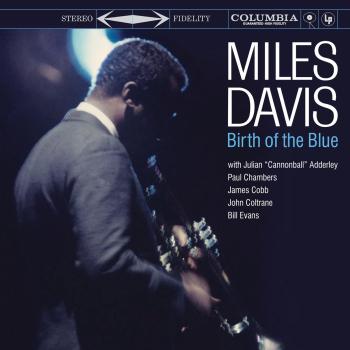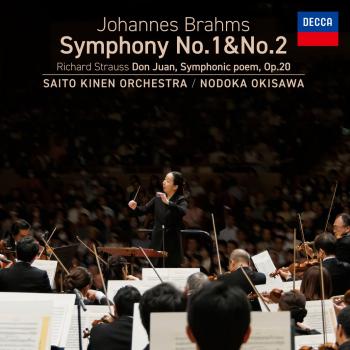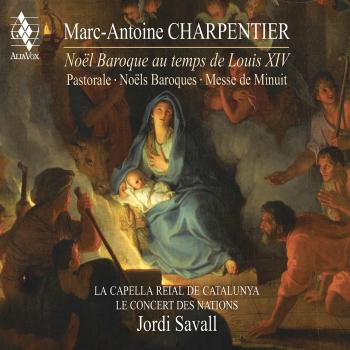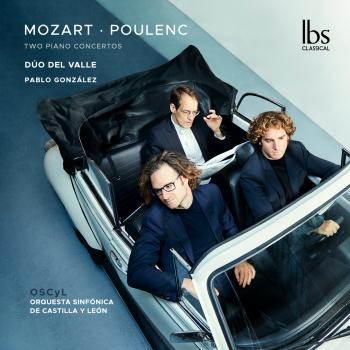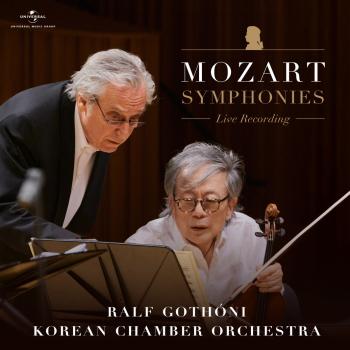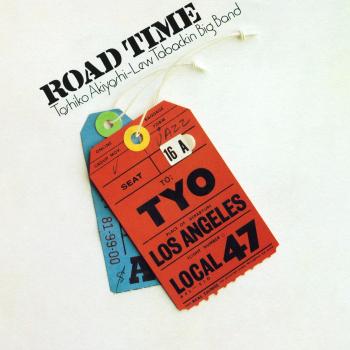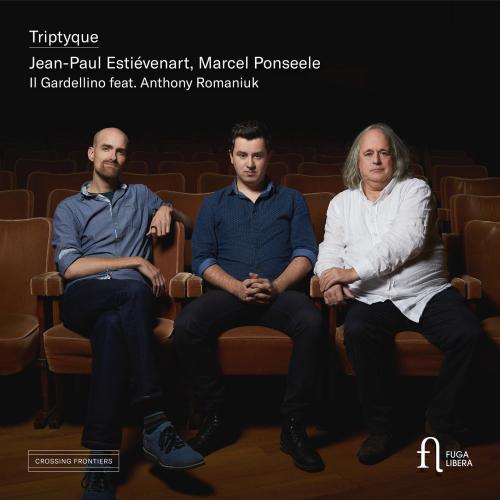
Album info
Album-Release:
2022
HRA-Release:
16.09.2022
Label: Fuga Libera
Genre: Classical
Subgenre: Chamber Music
Artist: Jean-Paul Estiévenart, Marcel Ponseele, Anthony Romaniuk
Composer: Johann Sebastian Bach (1685-1750)
Album including Album cover Booklet (PDF)
- Jean-Paul Estiévenart (b. 1985): Improvisation on B-A-C-H:
- 1 Estiévenart: Improvisation on B-A-C-H 01:25
- Johann Sebastian Bach (1685 - 1750): Weinen, Klagen, Sorgen, Zagen, BWV 12:
- 2 Bach: Weinen, Klagen, Sorgen, Zagen, BWV 12: I. Sinfonia / Improvisation on Weinen, Klagen, Sorgen, Zagen 05:14
- Aus tiefer Not schrei ich zu dir, BWV 38:
- 3 Bach: Aus tiefer Not schrei ich zu dir, BWV 38: Chorus. Aus tiefer Not schrei ich zu dir (Transcr. for Ensemble) 03:42
- Ich steh’ mit einem Fuss im Grabe, BWV 156:
- 4 Bach: Ich steh’ mit einem Fuss im Grabe, BWV 156: I. Sinfonia 02:14
- Jean-Paul Estiévenart: Improvisation and Prelude in B-Flat Minor, BWV 867:
- 5 Estiévenart: Improvisation and Prelude in B-Flat Minor, BWV 867 03:56
- Johann Sebastian Bach: Harpsichord Concerto No .1 in D Minor, BWV 1052:
- 6 Bach: Harpsichord Concerto No .1 in D Minor, BWV 1052: II. Adagio 05:41
- Jean-Paul Estiévenart: Transition (Pt. 1 & Pt. 2):
- 7 Estiévenart: Transition (Pt. 1 & Pt. 2) 07:45
- Johann Sebastian Bach: Concerto for Oboe in F Major, BWV 1053R:
- 8 Bach: Concerto for Oboe in F Major, BWV 1053R: II. Siciliano 04:49
- Harpsichord Concerto No .1 in D Minor, BWV 1052:
- 9 Bach: Harpsichord Concerto No .1 in D Minor, BWV 1052: I. Allegro 07:35
- Mit Fried und Freud ich fahr dahin, BWV 125:
- 10 Bach: Mit Fried und Freud ich fahr dahin, BWV 125: I. Chorus (Transcr. for Ensemble) 09:00
Info for Triptyque
"Zwei sehr unterschiedliche Musiker treffen aufeinander und erkennen, dass Musik nicht auf das Genre beschränkt ist, das sie gerade spielen. Sie berühren die Herzen ihrer Zuhörer und erkennen dabei, dass Musik eine universelle Sprache ist, die alles durchdringt." (Marcel Ponseele)
Die drei Abschnitte dieses Triptychons lassen sich wie folgt beschreiben: Die linke Tafel - das Elend - stellt das Tal der Tränen dar; der Übergang auf der rechten Tafel repräsentiert eine Veränderung im Alltag, während die Verklärung, die mittlere Tafel, die leuchtenden Farben der transzendentalen Glückseligkeit zeigt.
Jean-Paul Estiévenart ist ein belgischer Jazztrompeter, dessen bisheriger Werdegang überraschend dicht und vielfältig ist. Sein Spiel wird von seiner Leidenschaft für die Traditionen und die Geschichte des Genres ebenso genährt wie von modernen Experimenten und freier Improvisation. Sein Zusammentreffen mit dem bedeutenden Oboisten Marcel Ponseele führte nicht zu einem Konflikt zwischen den Kontexten, denn beide erleben die Musik auf dieselbe Weise. Sie haben sich entschieden, eine Auswahl von Werken - hauptsächlich von Bach - aufzuführen, bei denen jeder auf den anderen reagiert und die Musik, wo nötig, leicht verändert, um Raum für Improvisationen zu schaffen.
Jean-Paul Estiévenart, Trompete
Marcel Ponseele, Oboe
Anthony Romaniuk, Cembalo
Sam Gerstmans, Kontrabass
Il Gardellino:
Joanna Huszcza, Violine
Conor Gricmanis, Violine
Kaat De Cock, Viola
Ira Givol, Cello
Jan Van den Borre, Flöte
Jean-Paul Estiévenart
Within a 15-years career, Jean-Paul Estiévenart had the opportunity to meet and play with several big names in the international jazz scene : Enrico Pieranuzzi, Nathalie Loriers, Avishai Cohen - trumpet, Logan Richardson, Eric Legnini, Dré Pallemaerts, Joe Lovano, Noel Gallagher, the Brussels jazz Orchestra, Perico Sambeat, Maria Schneider, ... He has been playing in a dozen Belgian bands as sideman and is now touring with Antoine Pierre URBEX, Alex Koo Quartet, Mik Maak, Steven Delannoye Brandhaard, Manu Hermia Freetet, Jazz Station Big Band, God Save The Swing, Marco Locurcio Group, Filippo Bianchini quintet and his own projects : his trio and his quintet.
This makes him the most demanded trumpet player in the country, with more than 40 albums to his credit.
Jean-Paul Estiévenart (1985) started playing the trumpet in the fanfare of his hometown village, in the Belgian countryside, following his grandfather's path. He then kept on studying this complex instrument at the Academy of Saint-Ghislain for ten years where he got to know jazz music and instantly became passionate about it.
He moved to Brussels in 2004 and quickly became a key figure of Belgian jazz. He started playing around at a frantic pace that has never decreased…
In 2013, he launched a new musical adventure by creating his own trio with Sam Gerstmans on double bass and Antoine Pierre on drums. Their debut album, "Wanted" (W.E.R.F. Records, 2013), has set a singular sound in the Belgian jazz landscape and has marked the beginning of a beautiful story.
The trio is deeply impregnated by jazz tradition but constantly plays with its codes and extends its borders, while maintaining the elegance and authenticity of its heritage.
Their second album, "Behind The Darkness" (Igloo Records, 2016), is an autobiographical opus that refers to the trumpeter's childhood in coal dumps. It also represents the moments of darkness encountered during his existence. The title of the album however announces a positive outcome, while Jean-Paul has just turned 30 years old.
In September 2018, Jean-Paul Estiévenart launched his new quintet with Romain Pilon (guitar), Nicola Andrioli (piano), Nicolas Thys (double bass) and Antoine Pierre (drums). The repertoire offers a lyrical and energetic music. Their first album 'Strange Bird' was released on Outnote on Novembre 2019.
Marcel Ponseele
is normally considered among the foremost Baroque oboists of his period: conductor Philippe Herreweghe offers called him the best possible Baroque oboist in the globe. Ponseele can be a conductor of worldwide renown. In the second option role he offers led shows of mainly Baroque works together with his personal group, Outfit Il Gardellino, and he in addition has frequently carried out the L’Harmonie des Champs-Elysses, another Baroque-performing group. Ponseele, like many talented instrumentalists from your latter half from the twentieth hundred years, frequently conducts while carrying out as soloist in concert. He offers made several recordings with Il Gardellino in these dual tasks, especially in the music of J.S. Bach. Ponseele’s repertory stretches not merely to additional Baroque symbols, like Vivaldi, Handel, and Telemann, but to less popular numbers like Johann Gottlieb Graun, Christoph Schaffrath, Ernst Eichner, and many more. But Ponseele’s repertory gets to beyond the Baroque, consuming functions by Mozart, Beethoven, Reinecke, Piazzolla, and even more. As an oboist Ponseele typically performs on historical tools, playing eighteenth hundred years versions for Baroque functions. He also takes on Classical and Contemporary oboes. Ponseele’s discography is definitely considerable, both as soloist and conductor, with several discs released on a variety of brands, including Erato, BIS, Harmonia Mundi, and Accent. Marcel Ponseele was created in the Belgian town of Kortrijk in 1957. He analyzed music in the main music conservatories in Brussels, Bruges, and Ghent. It had been following these college student years that he considered the analysis of Baroque oboe. It paid: Ponseele was a prizewinner in the 1981 Musica Antiqua Competition kept in Bruges. Ponseele released his career mainly because an ensemble participant in Baroque chamber organizations and orchestras, most of them world-renowned like La Petite Bande, Chapelle Royale, as well as the Amsterdam Baroque Orchestra. He frequently played beneath the main early music conductors, including Lot Koopman, Philippe Herreweghe, Sigiswald Kuijken, Marc Minkowski, and John Eliot Gardiner. In 1988 Ponseele founded Outfit Il Gardellino, an organization named following the well-known Vivaldi concerto (R90). Over time he is becoming strongly identified using the group. Among its later on and even more critically acclaimed recordings may be the 2005 Compact disc of J.S. Bach oboe concertos, which also contains an intriguing set up by Ponseele of Mahler’s Ruckert Lieder No. 3. Ponseele offers served over the faculty from the Country wide Conservatory of Paris for quite some time and, along with his sibling, has generated oboes designed after eighteenth hundred years models.
Anthony Romaniuk
Keyboardist Anthony Romaniuk’s singular artistic voice stems from his relentless exploration of a vast range of musical styles.
A natural musical polyglot, his classical training is complemented by his improvising prowess, allowing him to traverse the borders between genres.
Jazz-obsessed in his youth in Australia, he studied classical piano in New York (Manhattan School of Music), spent several years specialising in early music (harpsichord and fortepiano in the Netherlands) and, post-studies, has continued his development across the realms of improvisation, Indy rock and ambient/electronic music.
As a classical recitalist, his repertoire includes music from Byrd to Bach, Beethoven, Chopin and Brahms (often on historical instruments), to Ligeti, Crumb and contemporary music. He works regularly with violinist Patricia Kopatchinskaja and tenor Reinoud Van Mechelen and is also a core member of Vox Luminis. Other noteworthy collaborations include working with cellists Peter Wispelwey and Nadège Rochat, the Australian Chamber Orchestra, Seattle Symphony Orchestra and Danish rock group Efterklang.
He has played at many important concert venues in Europe, including Wigmore Hall (London), Salle Gaveau (Paris), Concertgebouw Amsterdam, Berliner Konzerthaus, Bozar (Brussels) and at the Menuhin Festival (Gstaad), as well as frequent engagements in the US and Australia.
His debut solo recording “Bells”, released on Alpha Classics in 2020, showcases his approach to combining repertoire and improvisation, employing the timbres of four keyboard instruments, consciously pushing the boundaries of classical orthodoxy.
Booklet for Triptyque


